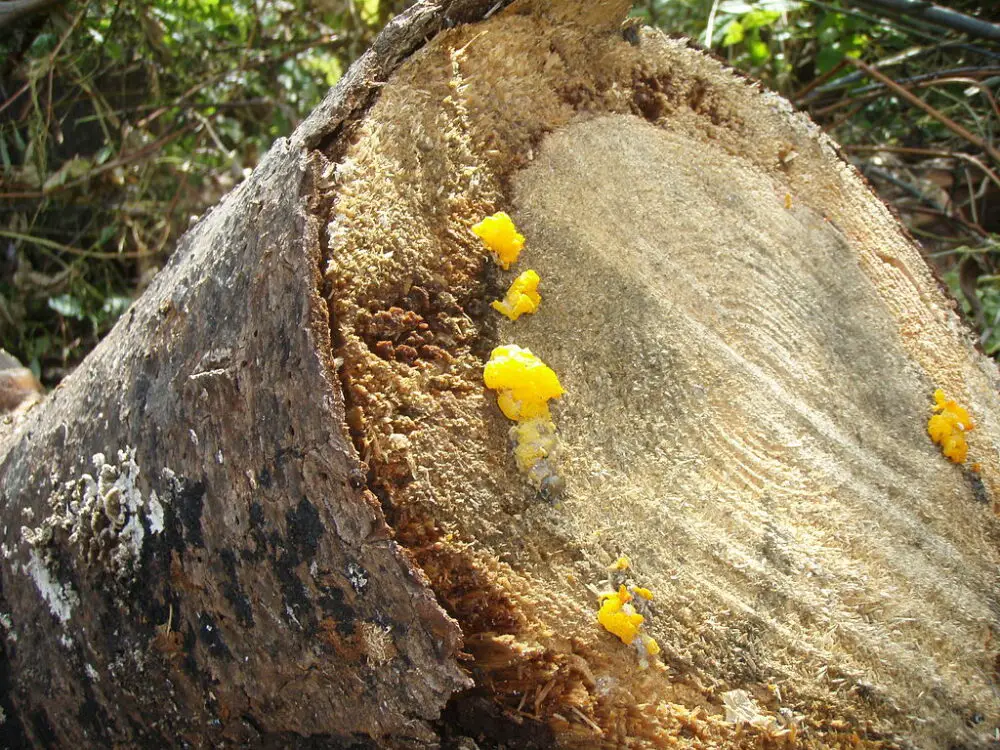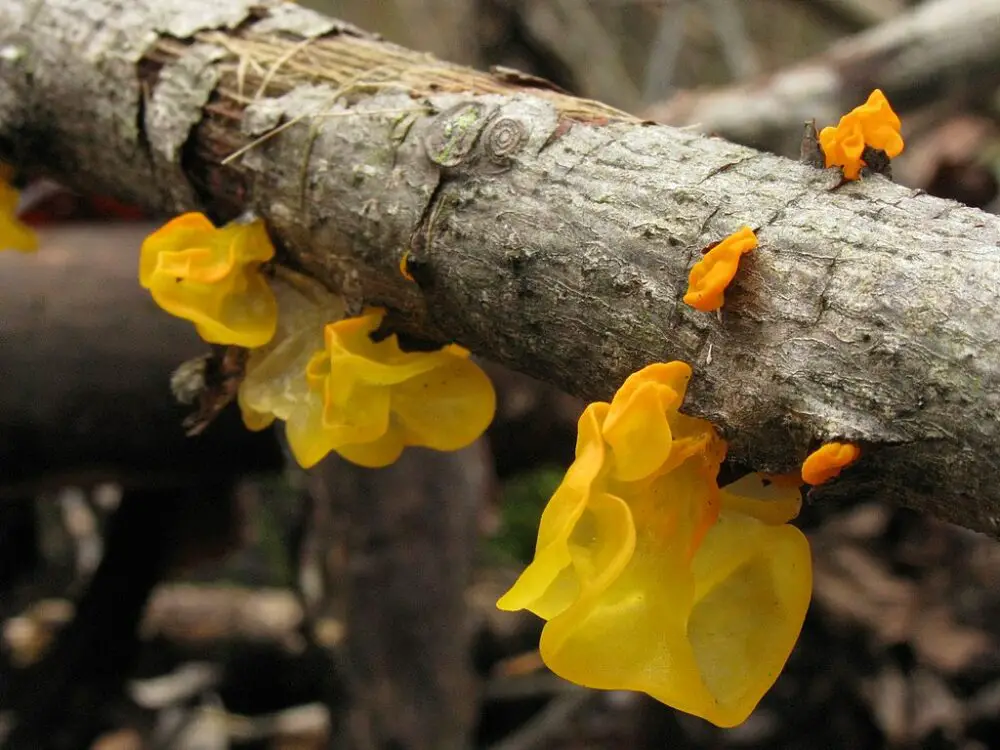Witches' butter, Dacrymyces palmatus, is one of several "jelly fungi" that grow on dead branches and logs in the winter. This edible but tasteless mushroom is easily identified by its brilliant orange color and slimy, jelly-like consistency.
Dacrymyces palmatus plant profile
| Scientific name | Dacrymyces palmatus |
| Family name | Dacrymycetaceae |
| Kingdom | Fungi |
| Genus | Dacrymyces |
| Phylum | Basidiomycota |
Common names include:
- Orange jelly
- Orange witch’s butter
- Witch’s butter
Smell: Nothing that stands out for identification.
Taste: Nothing that stands out for identification.
Spores: Shaped like a hot dog and smooth spore print.
Spore color: Orange.
Edibility: It’s edible but tasteless.
Habitat: Grows on conifer wood, fruiting from cracks in the bark or de-barked areas. It doesn’t usually fruit alone.
Witch’s butter can be found all year round but thrives in cooler climates during the late fall and early winter.
What Are You Foraging For Right Now?
We're thrilled to hear your ideas. What would you like to submit today? Feel free to share your thoughts and experiences with us.
As with the hen of the woods, it is a parasitic species that thrives on logs, stumps, or fallen branches. It will shrivel if the weather turns dry, only to swell up once it rained.
Why is it called witches’ butter?
It is believed that if witches’ butter appears on the gate or door of one’s home, the home (and its occupants) have been subjected to a witch’s spell. To remove the evil spell, it was necessary to pierce the jelly fungus with something sharp until it died.
An aptly-named fungus, Dacrymyces palmatus, produces orange, gelatinous fruiting bodies.
A second scientific name, D. Chrysospermus, further adds to the confusion, but all known lookalikes are edible.
It is commonly called orange jelly (Dacrymyces palmatus) and is often mistaken as another fungus called witch’s butter (Tremella).
Check our video on the 7 most poisonous mushrooms growing in the US (mushroom details and ingestion symptoms included)!
Where does witches’ butter grow?
Orange witches’ butter is found throughout most of North America, Europe, Northern Africa, and parts of Asia from May through November.
Generally, the orange species grows on conifers such as pine and hemlock and prefers unbarked branches.
It usually appears after heavy rainfall.
How to identify witches’ butter
- No cap or stem is present, and there are no gills.
- The entire fruiting body is composed of a lobed, brain-like lump of firm gelatinous tissue.
- The gelatinous mass’s surface and interior are yellow to yellow-orange, although dried specimens develop a reddish hue.
- The upper surface of witch’s butter has multi-septate, curved-oblong spores shaped like tuning forks.
- Fruiting bodies usually measure 0.3 to 2.3 inches x 0.9 inches and are arranged in dense clusters.
- The attachment to the substrate is narrow and distinctively white in color.
- There is a small disc or cushion that forms the tough fruit bodies. As such, it resembles species of Tremella (golden jelly fungus or yellow brain fungus), which are typically tougher, particularly Tremella mesenterica. T. mesenterica attacks crust fungi of the genus Peniophora and is pale yellow or bright yellow.


Is witches’ butter edible?
It is considered edible fungi.
The flavor of witches’ butter is minimal, but its texture and color can be attractive. You can add it to soups and stews when cooking.
Tips on How to cook with it witches’ butter
Despite the consensus that witches’ butter is edible, there is considerable debate regarding whether or not it should be consumed raw.
Some people believe that it must be cooked, either boiled or steamed. A general rule of thumb is to cook all mushrooms, whether wild or cultivated.
Even though something is edible, it does not necessarily have a great reason to be consumed. The witch’s butter is an intriguing curiosity with intriguing medicinal properties, but it does not have a particularly pleasant taste.
However, here are a few cooking tips:
- After picking it, it will quickly shrivel down to nothing if left on the counter. However, it will rehydrate quickly if kept in the refrigerator. It is often recommended that foragers cook it into a soup to add additional nutritional value.
- In one recipe, it is crispy fried in a breading that is seasoned with cajun spices. According to them, it tastes like calamari, which I would believe based on its texture.
- Candied orange witch’s butter may also be of interest. After washing, soak in simple syrup with extract for flavor, sprinkle with crystallized lemon (optional but delicious), and dehydrate overnight in the manner of gummy candies.
Dacrymyces palmatus: medicinal uses
As a medicinal mushroom, witches’ butter mushrooms have been shown to possess anti-tumor abilities and the ability to treat certain respiratory conditions.
According to current research, the fungus can be used to:
- stimulate the immune system
- combat diabetes and inflammation
- treat allergies
Witches’ butter foraging tips
- It is easy to spot orange witches’ butter because of its unusual color. So, in the winter, it will stand out.
- Witch’s butter appears from May to November throughout most of North America.
- It lives off of mostly dead or decaying plant material.
- You will find it only on fallen pine trees with no outer bark, so keep your eyes peeled for pine trees and hemlock.
Ana has always been interested in all things nature and flora. With her expertise in home gardening and interest in foraging, she has been spending her weekends and free time looking for edible native plants, flowers, and fungi. One of her many hobbies includes testing new savory and sweet recipes, juices or teas made from freshly picked plants, wild fruits, or mushrooms.

